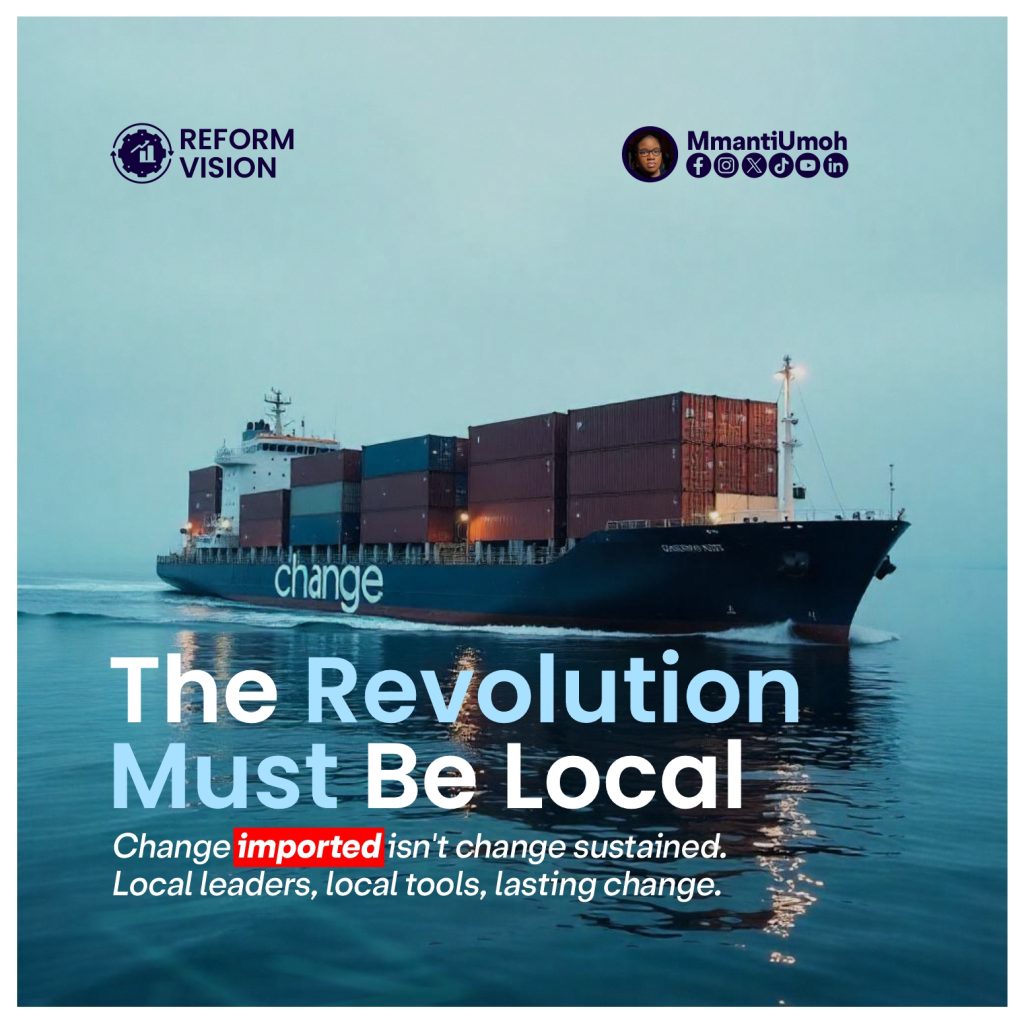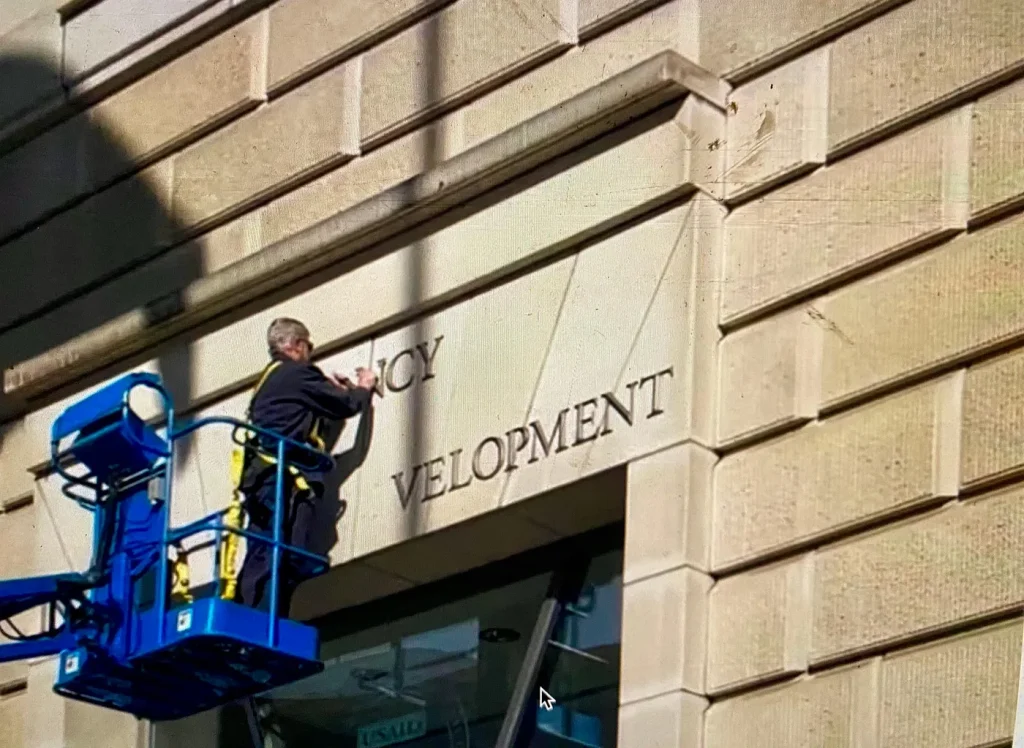Why African Tech Solutions Must Grow from Grassroots Leadership
By Mmanti Umoh

“You cannot build lasting solutions for people unless you’ve first lived among them, listened to them, and earned the right to call their struggles your own.”
Across the continent, we are witnessing a surge of energy around African innovation. From Lagos to Kigali, Nairobi to Accra, there is a shared ambition to transform our challenges into opportunities. Governments are drafting innovation strategies, foreign investors are taking interest in African startups, and pan-African hackathons are trying to code the future.
This is exciting.
But there is a danger, a subtle one, yet deeply consequential: building a revolution from the top down.
Too many of Africa’s “solutions” are not growing from the ground up, but are being designed in sanitized boardrooms by actors disconnected from the daily pulse of communities. Too many products claim to serve “Africans” without understanding the plurality and complexity of who Africans are. Too many “inclusive” technologies still exclude the voices and leadership of the very people they claim to serve.
And that’s the heart of the problem:
The tech revolution in Africa cannot be authentic unless it is local, led by local people, guided by local knowledge, and shaped by local priorities.
Local Is Not Small. Local Is Grounded.
In global development language, “local” is often treated as a synonym for “small” or “less sophisticated.” But local does not mean inferior. It means proximate. It means contextually rooted. It means solutions born from lived experience, not simply from data or theory.
A grassroots innovator building a mobile app to help market women manage inventory may not have an MBA, but she understands trust dynamics, language nuances, cultural barriers, and what features her users will ignore. That intelligence, though often undervalued, is strategic capital.
When we center local leadership, we unlock relevance, sustainability, and ownership. When we don’t, we risk creating systems that are technically sound but socially sterile.
The revolution cannot be designed for communities. It must be led by them.
Why Top-Down Innovation Fails
Let’s be honest. Africa has had its share of tech hype that never materialized. National digital ID systems that exclude rural populations. E-learning platforms that assume constant electricity. Agricultural apps that require smartphones in communities where farmers still rely on feature phones.
These are not failures of ambition. They are failures of proximity.
The further removed an innovator is from the people they are building for, the higher the risk that their solution will be misaligned, inaccessible, or irrelevant. And the more foreign the language, logic, and leadership of the tool, the less likely it is to be trusted or adopted.
Innovation that cannot be used is not innovation. It is aesthetic.
The problem is not technology. The problem is disconnected imagination.
The Revolution Will Be Human-First
If we want African technology to solve African problems, we must first ask: Whose problems are we solving? And who gets to define them?
Too many solutions are being built around communities, not with them. This creates a power imbalance. The innovator becomes the savior; the user becomes the recipient. The problem becomes an abstraction; the solution a product pitch.
Instead, we need an innovation model that:
- Starts with listening, not assumption
- Honors traditional knowledge, not just imported frameworks
- Respects the informal sector, which is often the real engine of African economies
- Sees communities as collaborators, not passive beneficiaries
This shift from technocentric to human-centric is not just philosophical. It is practical. People invest more deeply in what they help build. Trust leads to uptake. Ownership leads to scale.
Local Leadership Is a Technology of Its Own
Local leadership is not just representation. It is infrastructure.
It is the architecture that ensures technologies are deployed in ways that match the values, rhythms, and needs of a place. It translates innovation into adoption. It allows for iteration, feedback, and trust loops that foreign actors cannot easily replicate.
A woman leading a tech cooperative in Gombe understands why her community resists cashless systems. A youth organizer in Eldoret knows which digital literacy training model actually works. These insights are not soft data. They are the foundation of any meaningful tech strategy.
If we keep outsourcing leadership while localizing only at the implementation level, we will continue to reproduce dependency, no matter how shiny the solution looks.
Local leadership is not a checkbox. It is the compass.
Pan-African Does Not Mean Homogenized
There is a tendency, especially among external funders and regional accelerators, to push for “pan-African” solutions — tools that can be scaled across the continent. The vision is admirable, but the execution often defaults to flattening difference, not designing for diversity.
Africa is not a monolith. Language, culture, infrastructure, access levels, and governance vary vastly across borders. A payments platform that works in Nairobi may fail in Sokoto. An EdTech app designed in Johannesburg may not be usable in Kinshasa.
We do not need a one-size-fits-all revolution. We need a network of hyper-local solutions that speak to specific contexts, with shared infrastructure and values at the center.
Think global infrastructure, local expression.
What We Must Build and Fund Differently
If the revolution must be local, then so must the way we build, fund, and scale tech in Africa. That means:
1. Invest in Local Builders
Funding must go to creators embedded in communities, not just polished founders with global pitch decks. Gatekeeping capital through elitist networks stifles real innovation.
2. Design with Communities, Not Just for Them
User research is not enough. Co-creation must be built into the lifecycle of a product, from ideation to deployment to iteration.
3. Rethink “Scale”
Not every solution needs to go continental. A tool that works in three villages and changes lives there is still a success. Impact is not only about size; it is about significance.
4. Build Feedback Loops
Set up mechanisms for communities to report, review, and shape how technologies evolve. If there is no room for response, there is no real partnership.
Final Thought: The Future Is Grounded
We are not lacking innovation in Africa. We are rich in it. What we are often lacking is the imagination to trust our own proximity.
The solutions we need do not live in foreign templates. They live in our local languages, our informal networks, our unpolished but practical ingenuity.
The future of African tech will not be determined in glass towers or global tech summits. It will be forged in rural labs, urban slums, community workshops, roadside kiosks, and youth-led thinkspaces where lived experience and creativity collide.
Because that is where real problems live.
And that is where real solutions begin.
The revolution must be local. And when it is, it will be unstoppable.


